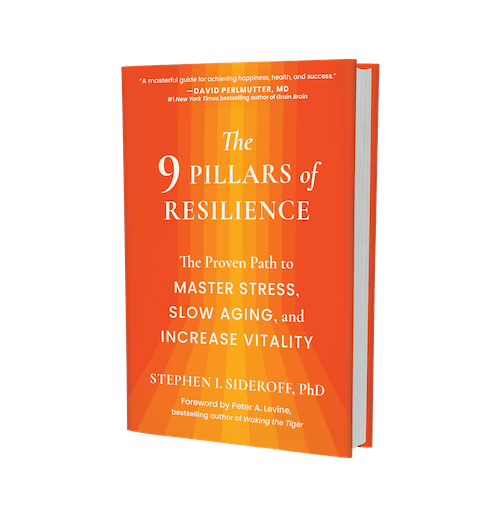
 A client once said, addiction is like driving down the road in an SUV and every letter, parking ticket, summons, or conflict is thrown into the back of the vehicle. Sobriety is like slamming on the brakes and having everything from the back fall forward into your lap. Recovery is stressful. In recovery you face all that was avoided as well as all that your addiction attempted to hide or run from.
A client once said, addiction is like driving down the road in an SUV and every letter, parking ticket, summons, or conflict is thrown into the back of the vehicle. Sobriety is like slamming on the brakes and having everything from the back fall forward into your lap. Recovery is stressful. In recovery you face all that was avoided as well as all that your addiction attempted to hide or run from.
The stresses of life create discomfort that increase craving. At the heart of sustained recovery is the ability for physical and emotional self-regulation. When stress triggers the activation of the nervous system, the goal is then to restore nervous system balance and stability. Most addicts fall into addiction as a reaction to their inability to restore optimal self-regulation and comfort which leads to drug seeking behavior. This ability to self-regulate in response to stress is at the heart of sustained recovery.
A growth mindset to recovery
The first step in healthy recovery is the establishment of a mindset that says, whatever shortcoming I experience, I must look at it as something I can learn to get better at. This is a growth mindset, as opposed to a fixed mindset in which a shortcoming is experienced as characterological and inaccessible to change or growth. From the notion of a growth mindset, we can now review the 9 keys to resilient recovery and protective factors against life’s stresses.
The 3 keys of relationship
The first key to sustained recovery is developing a healthy relationship with oneself. The hallmarks of the addicts’ relationship with self are negative and catastrophic in nature. In other words, their internal voice, or internal parent speaks from a negative, judgmental perspective grounding the addict in a sense of not being OK. This keeps one out of balance and easily triggered.
In this foundational element of recovery, one is shown the characteristics of a healthy internal voice or parent. This voice comes from a place of love, compassion, acceptance, self-care, support and joy. In my work with addiction as well as with most clients, I have them engage in a dialogue between their existing internal voice and this healthy model. By placing these voices outside themselves, they can be more objective as they experience the abusive and disrespectful way they have been talking to themselves. Through this dialogue process, they hear repeatedly, a loving and caring voice, and a model of how to begin treating themselves.
The second key is one’s relationship with others. Here the goal is to recognize a healthy relationship with others – based on the same characteristics of a healthy internal parent. Are you treated by others in a healthy, accepting and loving manner or in a negative or judgmental way? The next goal or intention, is to increase time with healthy relationships while eliminating or reducing time with unhealthy relationships. At the same time, it’s important to learn self-protection by setting healthy boundaries, being able to say “no”, and being assertive with one’s needs.
The third relationship key is relationship with something greater. This can be one’s spirituality, finding purpose and meaning in their lives, and giving service. These are behaviors that address a feeling of connection and support.
The 3 keys of organismic balance and mastery
The developmental mechanisms for the establishment of self-regulation occur during the mother-child bonding and attachment process. The mother-child dyad becomes a training ground in which the infant’s nervous system is regulated and developed through arousal modulation by the mother’s facial expressions, movement, sounds and even breathing pattern. We can say that the child’s nervous system is tuned by, or “attuned” to the mother. To the extent that the mother is tense, anxious, depressed or angry, the child’s physiological mechanisms for restoration and calming will be impaired. In fact, impairment of this process has been shown to result in less effective emotional regulation, less social competence and deficiency in dealing adaptively with stressful experiences.
The fourth key to resilient recovery is the restoration of the ability to turn down the activation of the nervous system after a stressful or traumatic event. There is no shortcut to this process. It takes practice. Addicts have lost the ability to travel down the continuum of nervous system activation. Restoring this ability is key number 4: physical balance and mastery. It’s a simple process that requires regular practicing of a relaxation or visualization process such as mindfulness meditation or biofeedback.
The next key to resilient recovery is mental balance and mastery. The thinking of most addicts is negative; sprinkled with words such as “I can’t”, and “It’s too difficult” and, in some form, “I’m not OK”. This key is learning to use a positive perspective. One in which the day begins with looking for what can go right, instead of what can go wrong. A positive mindset is one in which you take the attitude, “No matter what’s going on, there is always a best way to engage.”
The sixth key to resilient recovery is emotional balance and mastery. Just as stress activates craving, emotional reactivity has the same effect. The goal in this key is engaging in a process to release emotional excess baggage. Feelings not dealt with create the internal energy that can be easily triggered by slight upsets. It is important to be available to notice any feelings you are carrying. One easy way of determining this is happening is when you have an outsized reaction to a small stimulus. Another way to detect your emotional unfinished business is to imagine people in your life sitting next to you. As you feel into your relationship be open to what comes to the surface.
Sometimes we believe we can’t address these feelings we are carrying because addressing them may trigger the anger of the other person, or worse, they may reject you. What’s important is that what’s “unfinished” is the feeling you are carrying – not the outcome or problem that has triggered the emotion. The feeling is your responsibility, not the other person’s. Find a way to express and then let go of the feeling and realize you have no control over the behavior of the other person.
Three keys in how you engage with the world.
The seventh key is presence: being in the moment and aware of your environment. Too much of the time we are up in our heads, worrying or regretting, feeling angry or otherwise upset. Change, growth, joy and happiness can only happen when you are present, in the moment, and thus available to make choices. Our frenetic environment cultivates dissociation and reactivity. Make it an intention to be in the present as much as possible every day. To do this, use a cue – such as walking through a portal or doorway – as a signal for you to notice yourself and your environment. Gurdjief, the mystic from the last century, referred to this as remembering yourself. Find as many moments in your day to remember yourself.
The 8th key to resilient recovery is flexibility. I will address two types of flexibility. You want to shift your goals or your path when you find obstacles in your way. Rather than giving up, be flexible and choose a comparable goal, or find an alternative path. Too much of the time we can be rigid, inflexible or even stubborn, taking the attitude that you know the right way. The other type of flexibility is of perspective. This means allowing yourself to stand in the shoes of the other person. By shifting your perspective, you become more objective as well as empathetic, thus being more objective and open to better problem solving and decision making.
The last key to resilience is power, that I define as the ability to get things done. Recovering addicts have low levels of confidence and their ability to follow through and get things done. This key includes persistence, focus, goal setting and bringing their level of courage up enough to overcome fear. The two important parts of this key is doing a new and more objective review of one’s life successes to identify and own personal qualities. And second, to set up reachable goals to increase the odds for success and begin the process of regaining self-trust and self-confidence.
Finding The Path to Resilience
When we think of all that needs to be done to become more resilient, it can feel overwhelming. It’s so far down the road. Especially for the recovering addict who just had all their unfinished business fall forward from the back of his or her vehicle. This is why I’ve established the notion of “The Path”. The Path is defined by my 9 pillars of resilience. And The Path is available to you every day. All that’s needed is to take a few steps, based on my model, that puts you on The Path. Once there, you can feel confident that you are going in the right direction and that for the moment, you have achieved success. You don’t have to wait until sometime way in the future. And thus, at any time all you have to do is ask yourself one question: “Am I on or off The Path?” and if you are off The Path, there are simple steps to take, based on my new book: “The 9 Pillars of Resilience: The Proven Path to Master Stress, Slow Aging, and Increase Vitality.” This easy process can engender hope for success.
More Details: https://drstephensideroff.com/

